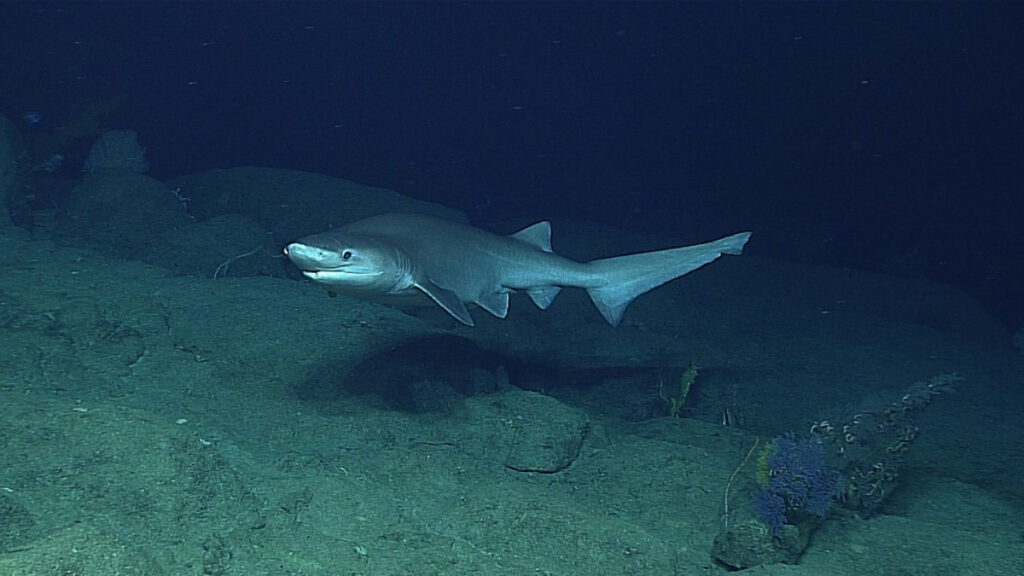“Little is known of the sixgill shark. This mysterious species spends most of its time patrolling the bottom of the ocean. Encounters are incredibly rare, divers can go their entire career without catching a glimpse of this elusive creature.“
Unchartered Odyssey (Garrett Clement)
Garrett Clement and a group of dive buddies were scuba diving in Port Alberni, Vancouver Island, when they came across a sixgill shark. Their delight is evident at the end of the video when they make this discovery!
About the Sixgill Shark
The bluntnose sixgill shark (Hexanchus griseus), also known as the cow shark, is the largest hexanchoid shark, reaching a length of 20 feet (6.1 meters). It is found in tropical and temperate waters all over the world, and its diet varies greatly by region. As a member of the Hexanchidae family, it has more fossil relatives than living relatives. The dogfish, greenland shark, and other six- and seven-gilled sharks are living relatives. Some shark ancestors date back 200 million years. This shark is notable for its primitive and current physical characteristics. The sixgill shark typically cruises underwater at depths around 350 feet.
The bluntnose sixgill shark has a long tail and a large body. The snout is broad and blunt, and the eyes are small. Its lower jaw has 6 rows of saw-like teeth and its upper jaw has smaller teeth. Tan, brown, and black skin tones are common. It has a light lateral line down the sides and on the edges of the fins, as well as darker coloured spots on the sides.
In poorly lit waters, the sixgill shark typically swims near the ocean floor or in the water column above the continental shelf. It is typically found 590-3,610 feet below the surface on the outer continental shelf, but its depth range can range from 0-8,202 feet. Juveniles will swim near the shoreline in search of food, sometimes in water as shallow as 39 feet, but adults will typically stay at depths greater than 330 feet. Only at night can it be seen near the ocean’s surface.

In the Philippines, an adult bluntnose sixgill shark was recently spotted at a depth of 850 ft. The species was photographed for the first time in Philippine waters. A pregnant bluntnose sixgill shark’s remains were discovered on a Vancouver Island beach north of Victoria, British Columbia, in 2019.
Although slow in nature, the bluntnose sixgill shark can reach high speeds when chasing and catching prey with its powerful tail. It feeds on a wide variety of prey, including fish, rays, chimaeras, squid, crabs, shrimps, seals, and other smaller sharks. As a result, the bluntnose sixgill shark is classified as a generalist and is less likely to be affected by scarcity in any of its food sources.
The International Union for Conservation of Nature (IUCN) lists the bluntnose sixgill shark as Near Threatened because, despite its extensive range, its longevity and popularity as a sport fish make it vulnerable to exploitation and unable to sustain targeted fishing for long. Although population data for this species is lacking in many areas, certain regional populations have been classified as severely depleted. It is typically caught as bycatch, but it is also caught for food and sport.
Sixgill sharks unless provoked, are relatively harmless to humans.
YouTube Video Uncharted Odyssey
Follow Garrett Clement’s Dive Adventures at Facebook and Instagram




